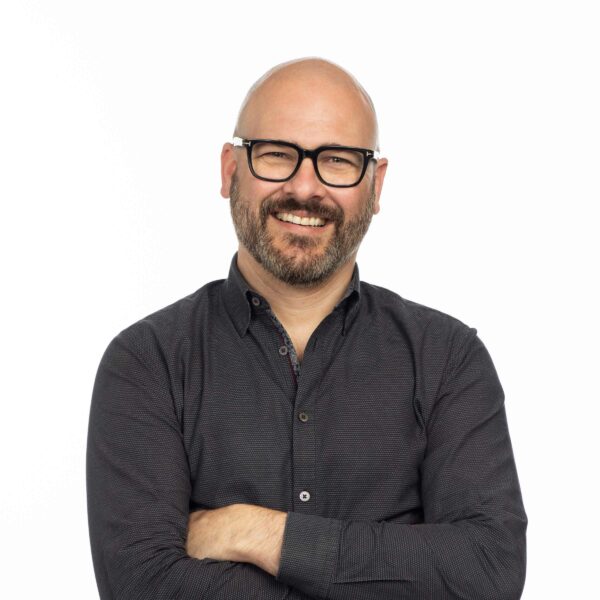This advice from our very own Chameleons can help inspire and ignite your next website project.
©kreatikar via Canva.com
Perfection is subjective. But that doesn’t keep website designers or marketers from trying to achieve that ultimate website design to end all website design.
The idea is that the more perfect you can make a website, the better it will achieve the goals you want. There are a lot of beautiful websites out there. And then, there are some that look like they’re stuck in 2005. But look aside, how those websites help a brand get leads, convert visitors, and make the statement they want matters more than pretty pictures.
So, what does it take to design a perfect website? Fellow Chameleon Freddie Laker asked some of our other Chameleons the same thing, based on a recent WordPress website design project that turned into a monolithic challenge. In this particular instance, the designer didn’t understand how to make certain things work in WordPress, which led to a much longer project timeline and a less-than-optimal outcome. Here’s how our other Chameleons responded:
Victoria Martinez: Align Design with Development
Every website design project is different because every brand’s needs are unique. Victoria shares that the designer will typically lean on the brand or business to point them in the right direction, which is why having samples is a must.
“Be prepared to show designers samples of layouts and features that are available within the theme being used. This helps spark ideas during the brainstorming process. Also, remember that working with a designer on a website is a two-way street. Be part of the conversation early on, and keep it going throughout the project. That way, issues can be addressed from the beginning, and if you find that some features are just not going to work, there’s time to come up with better alternatives.
Something else Victoria recommends is to keep an eye on site performance if it’s important to the client. Some designers are conscious of this, but don’t assume they all are. “Oftentimes, designers will end up thinking ‘big’ and completely miss the mark on performance. After a design has been presented, it’s hard to go back and cut out certain elements or features because they’re slowing down the website speed or don’t add to the website’s accessibility. Don’t let design get in the way of functionality.”
Carolina Usbeck: Simplicity Is Golden
It’s so easy to get lost in the details, but Carolina Usbeck warns that simplicity is often better than complexity for many reasons. “Keeping it simple with clean colors, contrasts, and ratios sets a strong foundation. I love using WebAim’s contrast checker tool to cut out the guesswork.”
Carolina explains that simplicity also extends to content. She recommends being conscious of the amount of content being added to pages. “You don’t want to have too much or too little. This affects SEO as well as website accessibility.”
Freddie Laker: Maximize Reusable or Ready-Made Components
Freddie notes that there’s a lot of value in using CMS platforms like WordPress. So many great designers have already made strong elements that work with WordPress themes. It would be a shame not to take advantage of them.
“I encourage anyone involved in a website design project to get familiar with some of the reusable components within WordPress or your respective CMS. These can be easily reused across page templates as needed. It cuts down on time spent building features from scratch that might not work well in the WordPress ecosystem.”
Freddie also cautions that all website designers should be selective about each design element. “Every element adds time to the project. If you’ve already quoted on the project, adding extra elements could blow out those estimates.”
Steve Rucker: Involve the Client Last
It’s heartbreaking for any client to see a great design, fall in love, and have it yanked out from under them when the developer sees that something isn’t going to work. That’s why you need to get the green light from your developer before showing the client anything, according to Steve.
“I’ve had some very significant and embarrassing issues with that in the past. Discuss functionality with the designer before it’s presented to the client. For example, the WordPress theme doesn’t support the vision of the designer, so custom work needs to be done. It really helps when the designer does their due diligence and researches the chosen theme before designing. A lesson I keep learning and re-learning: Don’t start coding until the design is REALLY final. This can save hours of work when the design changes and the developer must re-code. And often, the CSS becomes a mess when modifications are made to the original plan.”
Jason Miller: Take Your Hard-Learned Lessons with You
Jason admits he’s made plenty of mistakes when it comes to developing websites, but one sticks out to him—the one he calls the “120-hour lesson.”
“Oftentimes as a developer, we don’t get a chance to see the designs until after the client has approved them. On this particular project, the assumption was that we were going to swap the WordPress theme for a new one and then customize it a bit to be on brand. Once I saw the designs, I immediately recognized an issue. We quickly went from using a premade theme to developing a fully custom WordPress site. The biggest issue came in regards to the content. If we were just re-theming, for the most part, all of the existing content would remain the same, with maybe just some minor cleanup. What ended up happening was that all of the content for every page of the site ended up needing to be custom-crafted to fit the new designs.”
While the website looked great, way better than your average WordPress site, Jason regrets not forcing his way into the design conversations sooner.
What are some of the lessons you’ve learned the hard way about designing the “perfect” website?












